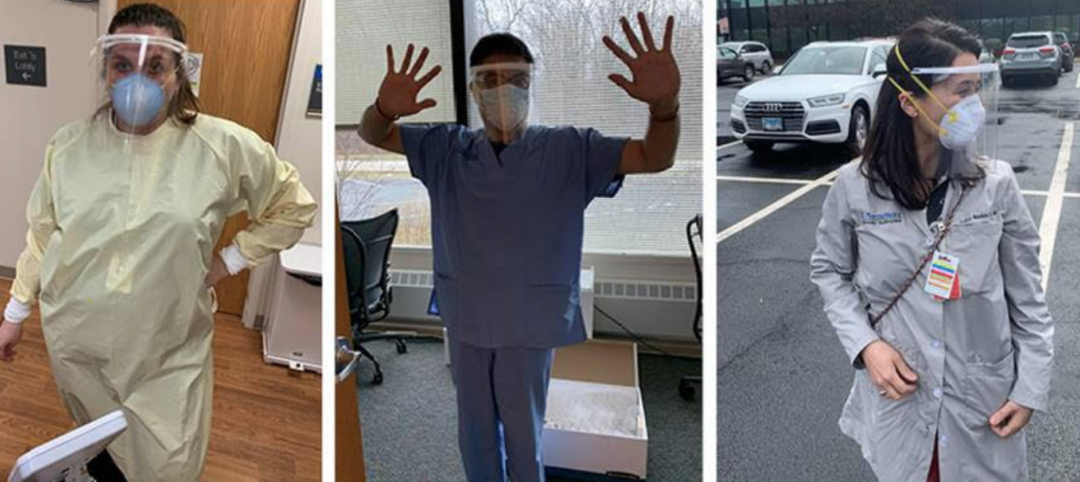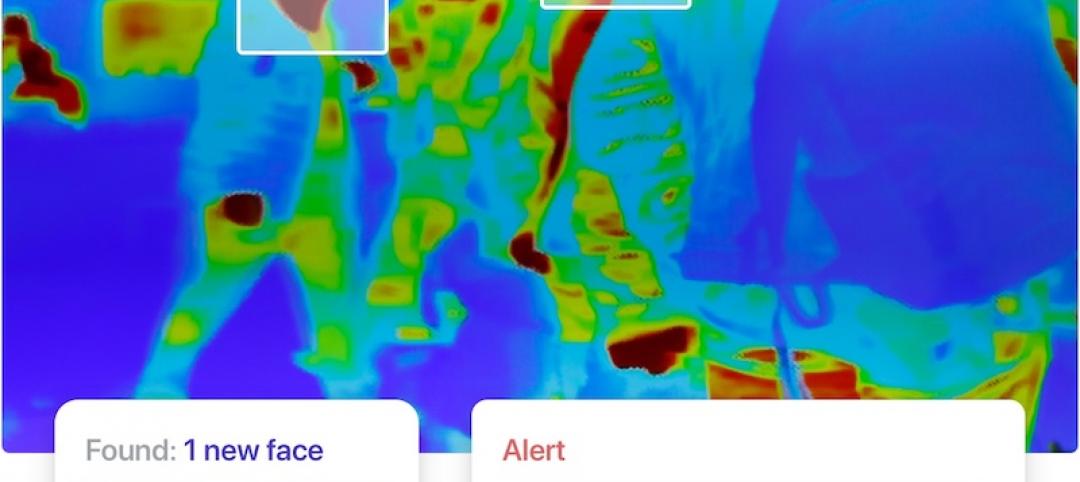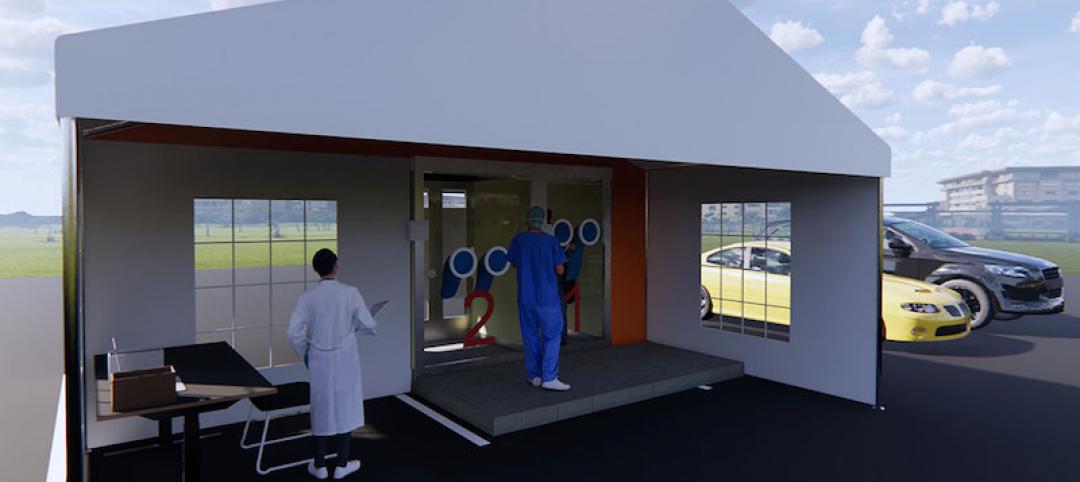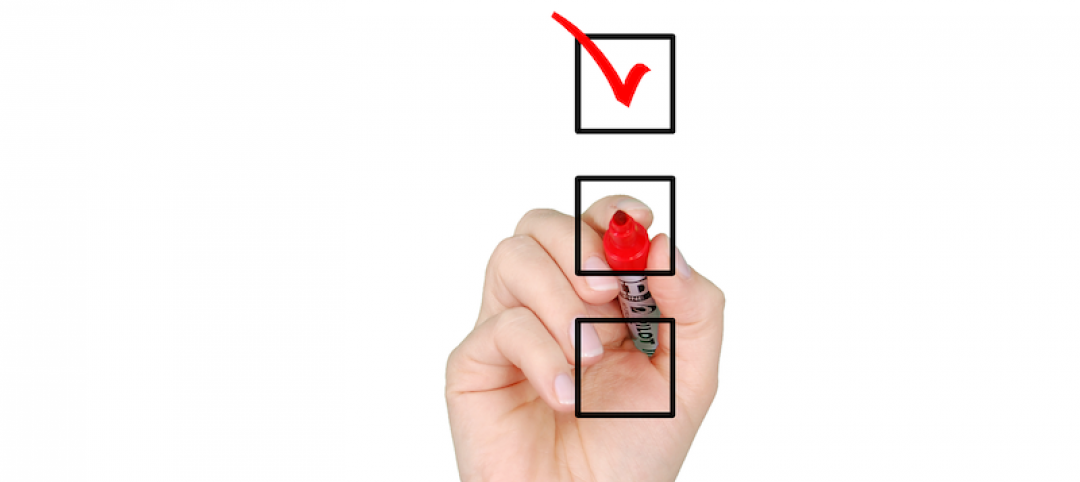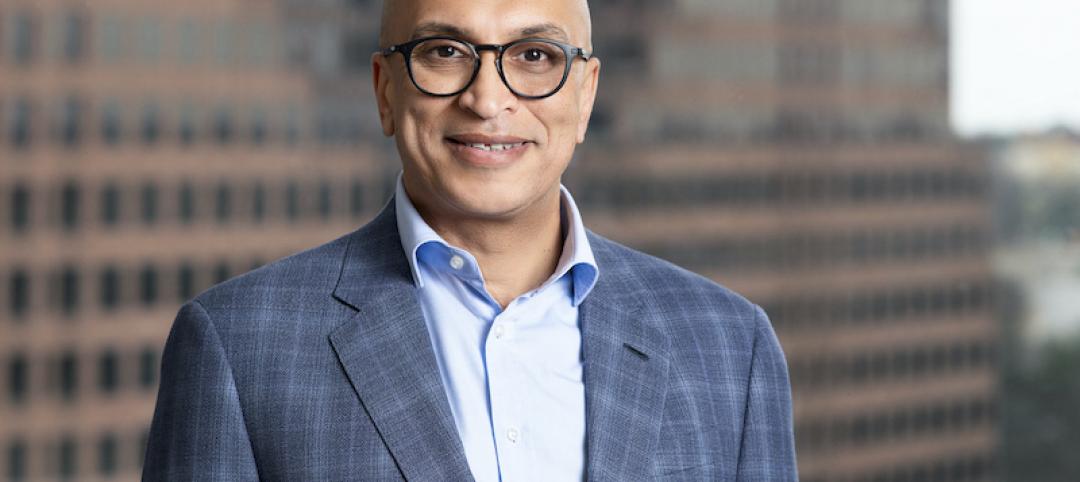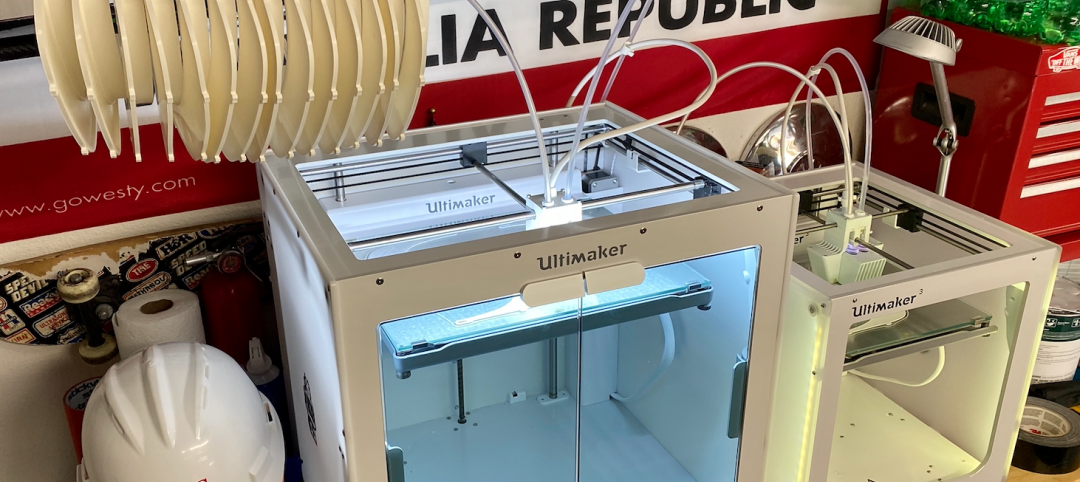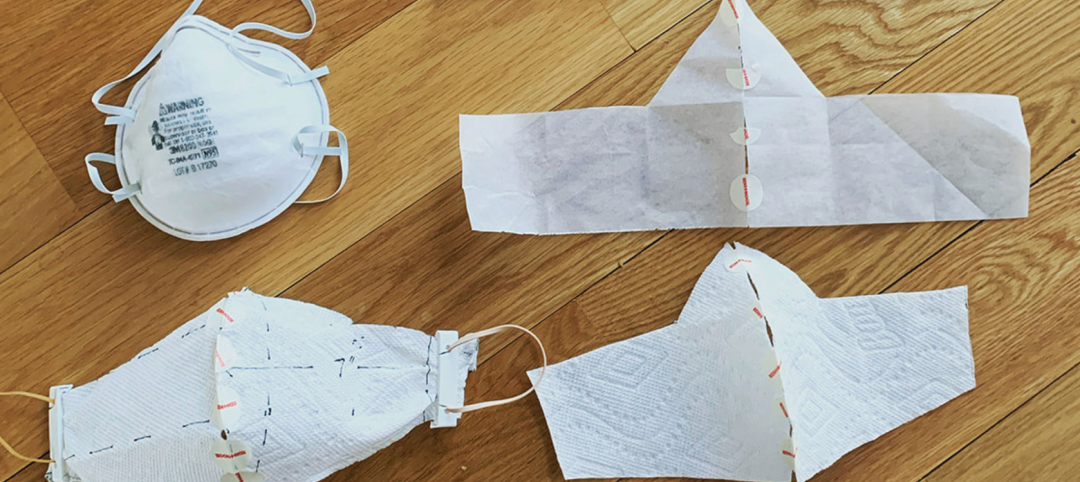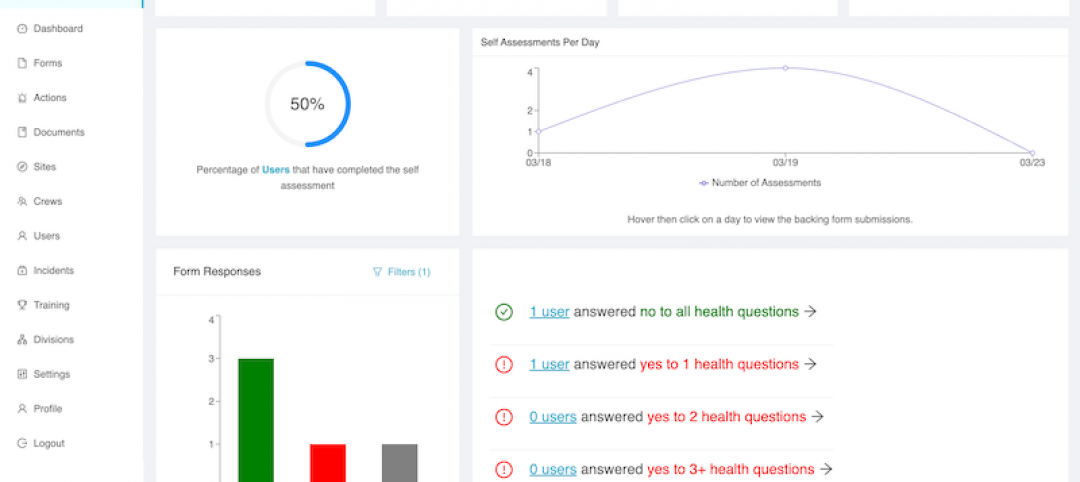With six degrees of physical separation from almost everyone these days—from your office mates to your clients—communicating with other people can be tough. For those who like to conduct business over lunch, it can be challenging to know how to best communicate with potential clients and colleagues over Zoom or even by e-mail. But it’s also hard to know what to say. With the pandemic, all business communications are now filtered through an uneasy and unfamiliar lens. Ever since the beginning of the pandemic, “People have needed to receive information differently than they ever did before,” says Maxinne Leighton, PhD, Assoc. AIA, Director of Marketing/Communications & Business Development for JB&B.
No matter how and what you communicate right now, it’s important to stick to the basics by focusing on the things you know—your knowledge, core values, and expertise. As Guy Geier, FAIA, FIIDA, LEED AP, Managing Partner of FXCollaborative explains, “Our messaging about the firm has been consistent since the pandemic started. It’s the same process, just with different tools.” In addition, with so much nervousness about the future, you need to stay connected to your network and, above all, your clients. According to Josh Frankel, AIA, Senior Project Manager at Hunter Roberts Construction Group, the firm has been “looking out for our clients’ interests, because their success is tied to our success. We continue to make sure that our interests are aligned.”
To Sell or Not to Sell
During a pandemic, selling may seem awkward at best, or inappropriate at worst. But business, just like life, has to go on—perhaps now with a bit of nuance. For example, you’ll probably have more luck if you take a soft touch with potential clients rather than a hard sell; sending out personal notes to your network instead of sending out mass e-blasts to thousands of people on your mailing list, or offering to help your existing clients as they navigate unchartered waters can be effective. Simply articulating your gratitude can also be an effective way to maintain and build your relationships. As Leighton explains, “We have been informational, authentic, transparent and also inclusive in our messaging. We acknowledge and thank our employees, clients, other consultants, and frontline workers in the spirit of community and reciprocity.”
Staying one step ahead of your clients is key. That could mean finding holistic solutions to the complex problems of designing and building during, and for, a pandemic. Or it could mean adjusting your expertise to the new challenges of an altered world. While clients may be hesitant to start large projects, you can be a trusted advisor to help them brainstorm their next move or keep their current projects moving forward. According to landscape architect Tom Balsley, ASLA, Principal Designer at SWA and SWA/Balsley, “Being a good listener is never going out of style. And while the pandemic is serious, it has not doused the fires of other, bigger issues” that clients have to contend with, such as climate change, the future of cities, mobility, and public space. While your clients are contending with the effects and realities of the current pandemic, it’s important to bring conversations back to longer-term strategies and outcomes.
So, How Do You Communicate?
While some firms are slowly trickling back to their offices, it will be months or longer until they fully reopen. Regardless of the timeframe, it’s clear that the pandemic has created a sea change in how we conduct business. No one could ever have anticipated a world in which people of all industries are primarily working—and learning to work—from home. By now, we’ve all been on calls interrupted by spouses, pets, or young children running around in the background. Remote working “has enlightened the personal side of our industry colleagues and shown people in a multi-faceted way,” says Leighton.
WFH may even offer some benefits for client development. While it might seem odd to contact clients and potential clients in a WFH environment, Adam Yarinsky, FAIA, LEED AP, Principal of Architecture Research Office, thinks that the opposite is true: “Our audiences are not necessarily in their work spaces, and people to seem to be very accessible these days.” Because most people are rarely traveling to conduct meetings or business, it can be easier to set up introductory phone calls or videoconferences.
Firms are also rethinking how they stay on the radar of potential clients who they do not see in person. Social media and digital marketing have quickly skyrocketed from being somewhat important to imperative. Kirsten Sibilia, Managing Principal at Dattner Architects, explains that the firm ramped up its social media efforts since March, becoming more sophisticated about its online presence, particularly with regard to proposal pursuits and business development goals. The firm also crystallized its messaging and relaunched its website in June, “because we needed to claim our turf in the market. We wanted to be clear that our work is about making cities more vibrant and equitable, to communicate our impact, and to share our pride.”
While most firms use social media, many individuals are finding it to be a highly effective tool for connecting directly with potential clients or other professionals, either by posting content or using social media channels to expand their networks. At the beginning of the pandemic, for example, Hunter Roberts created an informational video that was meant to train its staff about COVID safety measures on construction sites. When the firm realized that the video could be a great marketing tool, they shared it with people outside the firm to demonstrate its knowledge of best practices. Geier of FXCollaborative explains that people in the firm are “using LinkedIn as a source to connect people and meet them, such as right after a webinar. Social media tools are helping us to network because we can’t go to events. Perhaps this is the silver lining of the pandemic: we have a whole new set of arrows in the quiver.”
Do a Screen Test
Everyone in the industry was forced into new ways of marketing their services in March and April with little preparation or planning. With client presentations and interviews now conducted by videoconference, many firms are restructuring how they present proposals, brochures, and other collateral. Materials that were originally designed for print are likely to look outdated; at the very least, they will be less effective than screen-ready formats. Many firms have revised their standard templates to incorporate full-bleed images, hyperlinks, single-page layouts (as opposed to two-page spreads), and landscape formats that conform to the dimensions of tablets and laptops.
It’s also a good time to align your content and presentation skills with industry protocols and practices. Says Leighton, “We reframed specific marketing materials…in a post-COVID environment to keep current; otherwise they could seem obsolete.” In addition, it’s important to be technically savvy with virtual meetings and interviews. Frankel admits, “It has been a learning curve. Suddenly, we were forced to prepare and practice for meetings and interviews in Teams rather than from a conference room. We had to figure out how to do it remotely.” Geier agrees and adds, “We structure our presentations carefully to make sure that everything looks right, and we rehearse a lot more than we did previously. We want to make sure that peoples’ personalities come through on the screen.”
What’s Next?
The pandemic has permanently changed how we communicate. Whenever it happens, any return to what we once considered “normal” will no doubt be different than it was; the pandemic has demonstrated that people can work together from a distance. Many of the lessons that we have learned from the pandemic, and many of its changes, are here to stay. There are downsides, but there are also benefits.
For example, clients will be less likely to ask for hard copies of proposals and marketing materials, which can be expensive and time-consuming to produce. No doubt, technologies will come to the forefront to help firms in the AEC industry communicate better and more effectively with their audiences, conduct business development, build new relationships, and stay in touch with their clients, collaborators, and networks.
Instead of looking back, we need to have confidence in what’s to come. “We can’t paint ourselves into a corner with short-term solutions for social distancing that conflict with timeless goals, such as bringing people together,” asserts Balsley. “Clients are uncertain, and they’re looking for expert design knowledge to form opinions and take the next steps.” AEC firms can be waiting on the front lines to assist. On a positive note, the pandemic may have also refined the process of selling professional services in a constructive way. “The pandemic has further humanized the interpersonal nature of the professional world,” says Leighton. As a result of the pandemic, we have “more transparency, generosity, and personability—and I hope these lessons will remain.”
Related Stories
Coronavirus | Apr 4, 2020
COVID-19: Architecture firms churn out protective face shields using their 3D printers
Architecture firms from coast to coast have suddenly turned into manufacturing centers for the production of protective face shields and face masks for use by healthcare workers fighting the COVID-10 pandemic.
Coronavirus | Apr 3, 2020
Cities will survive the pandemic
Density may make it easier for the virus to spread, but let’s not forget that cities are in many ways the heart of society, and a springboard of big ideas, inventions, art, and culture.
Coronavirus | Apr 3, 2020
Kogniz Health launches AI-based fever detection cameras for crowds to help limit coronavirus spread
System continuously scans crowds for fever as they enter facilities to locate and isolate risks.
Coronavirus | Apr 3, 2020
27% of construction firms report layoffs amid COVID-19 outbreak, says AGC
The fast-worsening COVID-19 pandemic has triggered layoffs at more than a quarter of construction firms responding to an online survey released today by the Associated General Contractors of America. The finding, based on responses from earlier this week, contrasts with the government’s monthly employment report for March, which found that construction employment declined by 29,000 as of mid-March.
Coronavirus | Apr 3, 2020
Test facility in a box: Modular, walk-in booth design for coronavirus testing
To address the need for testing in urban areas for those without vehicles, CannonDesign architect Albert Rhee created a walk-in testing booth that is slated for public use.
Coronavirus | Apr 3, 2020
Survey of U.S. code officials shows trends in code compliance during COVID-19
The results of the survey tell us how jurisdictions throughout the U.S. are keeping up with inspections, new building permits and new construction.
Coronavirus | Apr 3, 2020
CallisonRTKL buoyed by overseas demand
Customer service across the globe remains No. 1 priority, says new CFO.
Coronavirus | Apr 2, 2020
COVID-19: HMC Architects using 3D Printers to make face shields for healthcare workers
HMC staff is producing 3D-printed parts from their homes as they self-isolate.
Coronavirus | Apr 2, 2020
COVID-19: CannonDesign initiates industry coalition to make masks for healthcare providers
Coalition formed to make DIY face masks for healthcare workers in COVID-19 settings.
Coronavirus | Apr 2, 2020
As virus spreads across North America, software providers step up with cost-free offerings
The goal is to keep construction projects moving forward at a time when jobs are being postponed or canceled.



